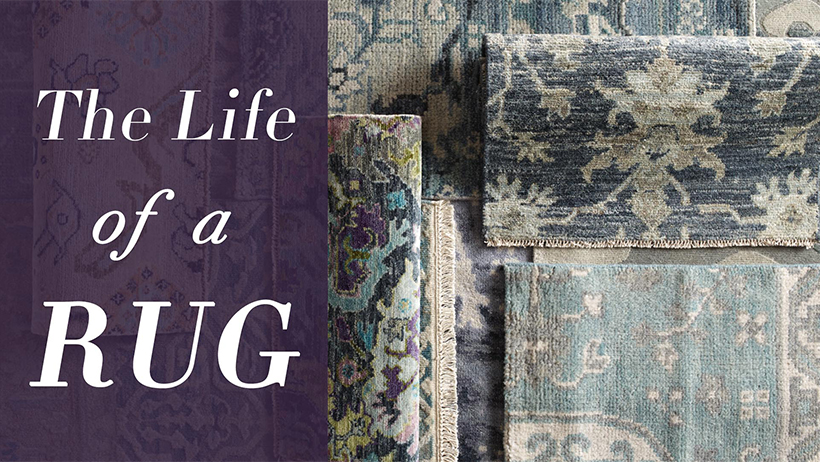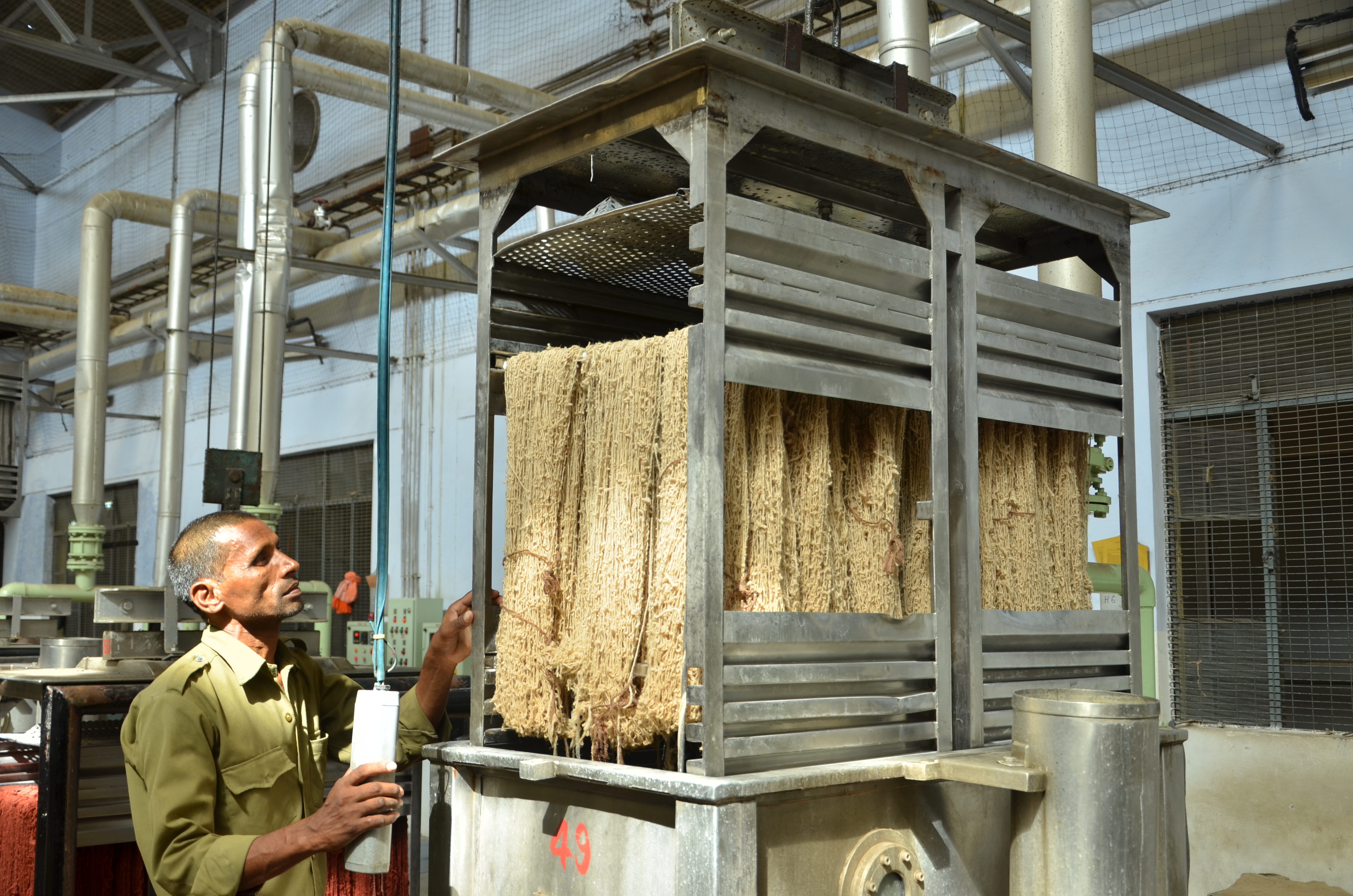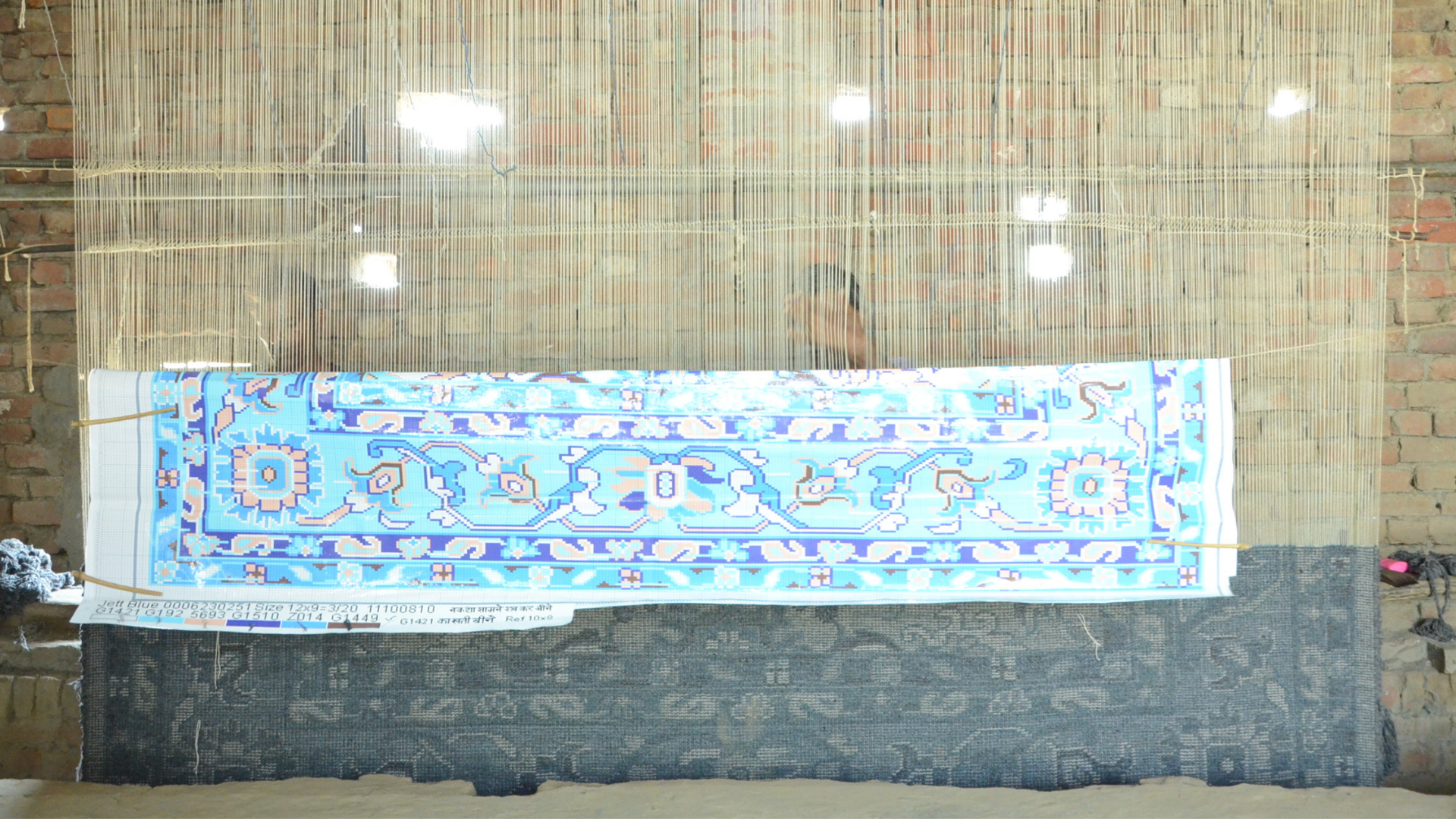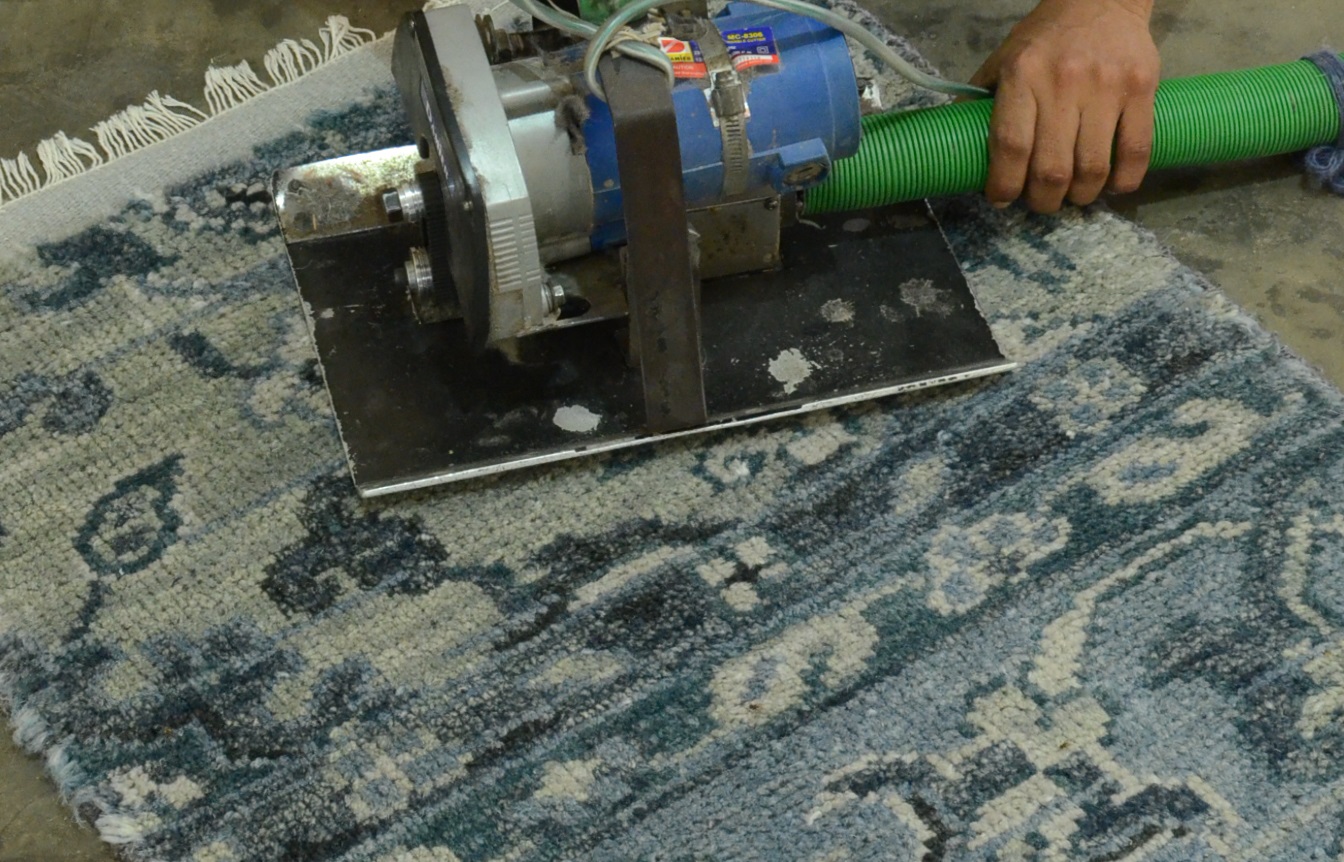Ever wonder how one of your favorite products is made? Not just how the design comes to be, but how the fibers are married and become the plush textures you hold in your hand? We sat down with members of the Kravet Inc. product development team to find out – Carpet: how it’s made.
The beginning of any fine rug is the materials. Sheep are sheared to harvest their fleece. The fleece is thoroughly cleansed and washed completely with gentle wool cleansers to maintain the integrity of the wool fibers.
The raw fibers are spun into long strands of wool yarn. The fibers are twisted to achieve various strands, deniers, textures and blends. Special care is taken to protect the fibers from breakage; it’s then ready for dyeing.
Then the pigmenting process begins. Hanks of yarn are layered and dipped in the dyes for a precise period of time. The shades of colors can vary depending on the dye’s level of penetration and position of each yarn in the hank bundle. This is a tedious manual process that showcases the nuances of each individual rug.
After the wool hanks are dyed, they are set on drying racks. They are rotated, turned and flipped numerous times during the drying process. Another method is traditional air drying, when the yarn is placed in the sun for several days.
Each design is translated into full-size graphs called a map, which is drawn by an artist. This is where the beauty and creativity of the process is on full display. Depending on the size, elements are rearranged and scaled to be aesthetically pleasing. High contrast colors designate where a color change is required. The weavers follow the map to create the rug.
Cotton/wool yarns are set on a loom. Foundations are set and the rug is woven by hand. Each knot is individually placed by highly skilled artisans that work side by side knotting in unison. Rugs increase about 2-6 inches per day depending on the intricacy of the pattern. It is measured and logged at different points to show the progression to track how long it will take to create.
In the finishing stage, the rug undergoes are washed repeatedly. First the rug is washed with clear water and gently scrubbed. Very gentle detergent cleansers are added and the rug is gently scrubbed with long handled paddles and brushes. Water is removed from paddles over and over. It is then laid out in the sun for drying. It is turned and flipped repeatedly for thorough and complete drying to achieve a soft hand and luster. This entire process can take several days from start to finish. Much of the time depends on the weather conditions, which also may result in varied color tones from rug to rug.
As a part of the finishing process, there is some fine tuning needed to the rug. After the shearing of the rug, there will be small fibers and threads that need to be fixed by hand using scissors and razors. This is a detailed and time consuming process. Uneven edges are trimmed in order to be straight. The rug is then bound by hand with a large needle threaded with matching wool thread. Loops are made with the needle and thread down the sides of the rug so the natural fringe is tailored evenly.
The next step is sun-drying. The rug is placed in the sun and is nailed or stitched to horizontal frames. Uneven sizing can naturally occur. The rug is pulled and stretched to its appropriate size. This process is known as stretching. Sizing may be a little off during the drying process. While being heated by the sun, the sturdy frame helps the rug to lay completely flat and the shape to be uniform.
There is one final cleansing of the face of the rug. A cleansing conditioner is applied by hand to the rug to bring out the natural lanolin and bring out the sheen of the rug. In more complex colored rugs, it is necessary to re-dye the wool for quality control. Though striation of color is one of the beautiful aspects of a hand knotted rug, there may be areas where a correction of the color or an enhancement is needed and addressed. Artisans may even take a paintbrush to even out color and make sure each rug is perfect. The rug is then sun-dried again and ready for the journey to the Kravet and beyond.
This intricate process takes time and puts Kravet Inc.’s expert artisan craftsmanship on full display through the vast assortment of rugs and broadloom from Kravet, Lee Jofa and Brunschwig & Fils.
Explore the world of Carpet from all of brands here.







